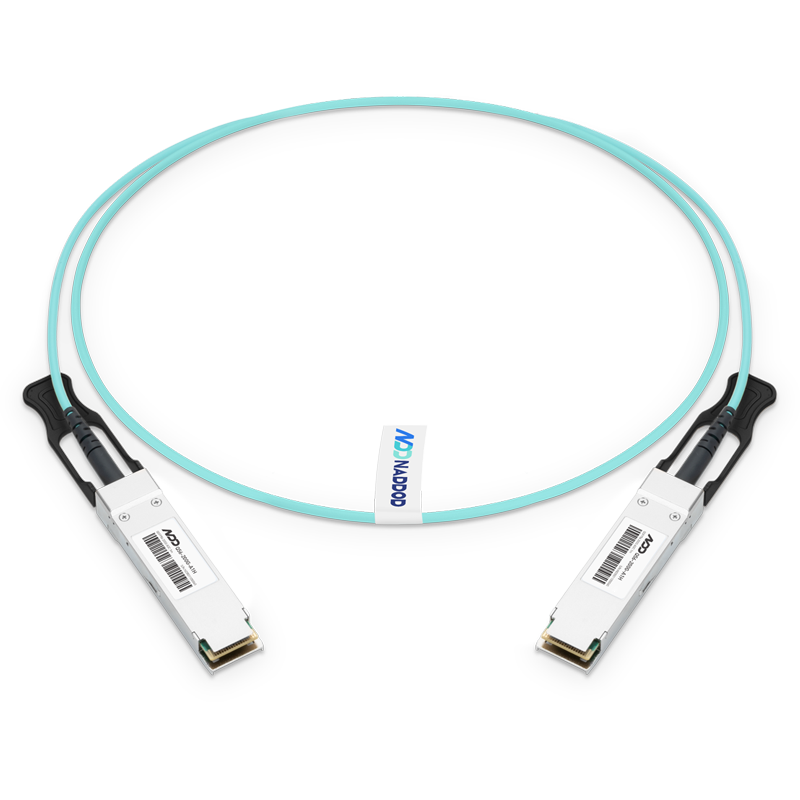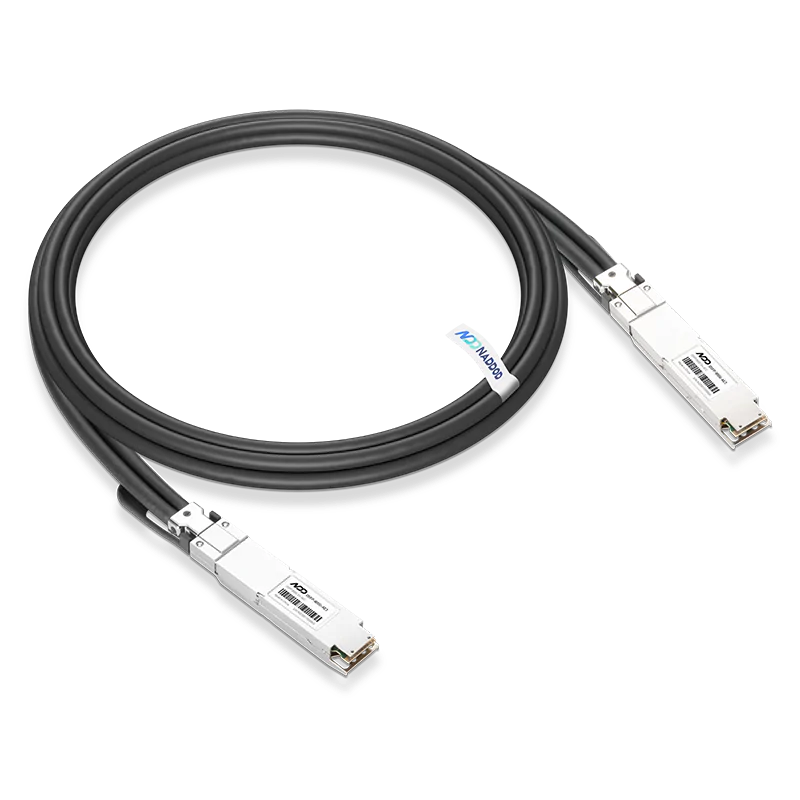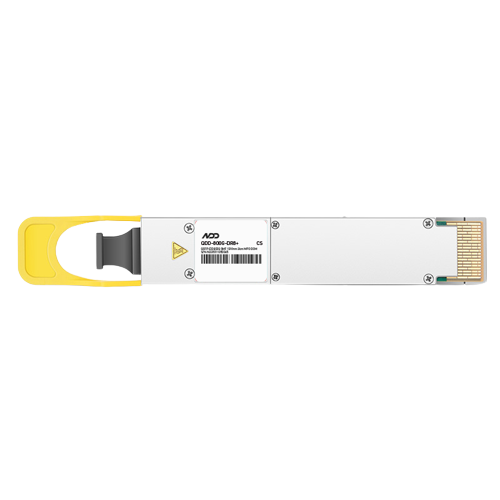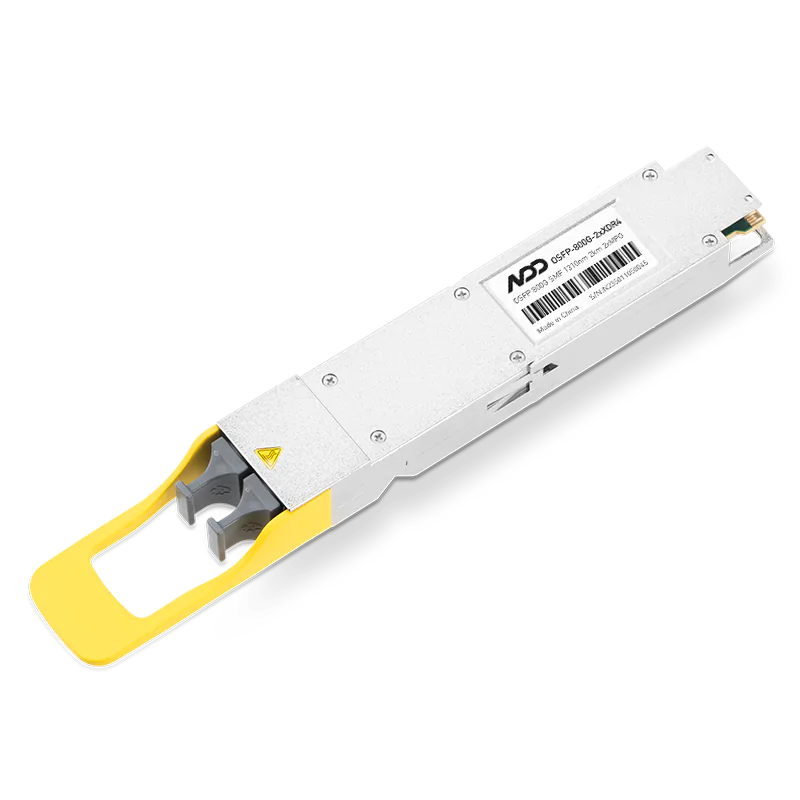Introduction
With the rapid development of communication technology and the advent of the digital era, the demand for higher speeds and bandwidth in data transmission has become increasingly urgent. In this context, 800G optical transceivers have emerged and become one of the hot topics in the field of optical communications.
The mass production of 800G optical transceivers and the increasing market demand are driven not only by the breakthrough in artificial intelligence technologies like ChatGPT but also by the requirements of various industries for high-performance data centers and large-scale cloud computing. This article will provide a detailed introduction to the types and various standards of 800G optical transceivers, as well as their applications in multi-mode and single-mode transmissions, to provide readers with a comprehensive overview of 800G optical transceivers.
Type of 800G Optical Transceivers
Single-Channel 100G and 200G
800G = 8 * 100G = 4 * 200G. Therefore, based on the single-channel rate, 800G optical transceivers can be mainly divided into two categories: single-channel 100G and 200G. The corresponding architectures are shown in the diagram below. Single-channel 100G optical transceivers can be implemented relatively quickly, while 200G optical transceivers require higher requirements for optical devices. Currently, the maximum supported rate for electrical interfaces is 112Gbps PAM4. For the case of single-channel 200G, a gearbox is required for conversion.

Multi-mode
For multimode applications with transmission distances below 100m, there are mainly two standards for 800G optical transceivers.
800G SR8
The 800G SR8 transceiver uses the VCSEL scheme with a wavelength of 850nm and a single-channel rate of 100Gbps PAM4. It requires 16 optical fibers. This can be considered as an upgraded version of the 400G SR4 with doubled channel count. The optical interface for this transceiver is MPO-16 or a 2-row MPO-12, as shown in the diagram below.

800G SR4.2
This scheme uses two wavelengths, 850nm and 910nm, for bidirectional transmission within a single fiber, known as bi-directional transmission. A DeMux is required in the module to separate the two wavelengths. The single-channel rate is 100Gbps PAM4, and it requires 8 optical fibers, which is half the number compared to SR8. The block diagram of this scheme is shown below.

The optical interface for this scheme uses the MPO-12 interface, as shown in the diagram below.

Single-Mode
For single-mode applications, there are several standards for 800G optical transceivers:
800G DR8, 800G 2xDR4, and 800G PSM8
These three standards have similar internal architectures, including 8 Tx and 8 Rx, with a single-channel rate of 100Gbps and requiring 16 optical fibers.

Among them, PSM8 has a transmission distance of 100m, while DR8 and 2xDR4 correspond to a transmission distance of 500m. The optical interface for 2xDR4 is 2 MPO-12 connectors, as shown in the diagram below, which allows interconnection with 400G DR4 modules for easy data center upgrades. The optical interface for PSM8 and DR8 is MPO-16.

800G 2xFR4 and 2xLR4
These two standards have similar internal structures, consisting of 4 wavelengths with a single-channel rate of 100Gbps. By using Mux, the number of optical fibers is reduced to 4, as shown in the diagram below.

These two schemes are upgrades of 400G FR4 and LR4 transceivers. They use CWDM4 wavelengths at 1271/1291/1311/1331nm. 2xFR4 supports a transmission distance of 2km, while 2xLR4 supports a transmission distance of 10km. The optical interface for these schemes uses dual CS or dual duplex LC interfaces.

800G FR4
This scheme uses four wavelengths with a single-channel rate of 200Gbps and requires two optical fibers. It supports a transmission distance of 2km, as shown in the diagram below.

It uses the duplex LC optical interface, as shown in the diagram below.

800G FR8
This scheme uses eight wavelengths, with each wavelength having a speed of 100Gbps, requiring two optical fibers, and supporting a transmission distance of 2km. The eight wavelength channels are 1271/1291/1311/1331/1351/1371/1391/1411nm, as shown in the diagram below.

Comparison of QSFP-DD and OSFP Interfaces
QSFP-DD and OSFP both support 800G, and their comparison is shown in the diagram below. For 800G optical transceivers, QSFP-DD has made some supplementary updates, known as QSFP-DD 800.

The main differences between them are as follows:
Size
OSFP is slightly larger in size.
Power Consumption
OSFP has slightly higher power consumption compared to QSFP-DD.
Compatibility
QSFP-DD is fully compatible with QSFP56, QSFP28 and QSFP+, while OSFP is not compatible.
Trends in Optical Transceiver Technology Development
Currently, commercially available single-mode 800G optical transceivers mainly adopt the EML (Electroabsorption Modulated Laser) scheme. Whether silicon photonics can occupy a place in this field is yet to be determined and depends mainly on cost and power consumption. For the single-wavelength 200G scheme, EML or thin-film lithium niobate (LiNbO3) are two possible technological paths.
Conclusion
With the advent of the digital era, the demand for high-speed, high-bandwidth communication is continuously increasing, leading to the emergence of 800G optical transceivers. This article has introduced various classifications and standards of 800G transceivers, covering the classifications of single-channel 100G and 200G, multi-mode and single-mode, as well as optical interfaces and transmission distances under different standards.
Additionally, a comparison has been made between the QSFP-DD and OSFP interfaces, and the future trends in optical transceiver technology development have been discussed. With ongoing technological advancements and innovations, we can expect 800G optical transceivers to play a greater role in practical applications, driving the development of the digital communication field.
Related Resources:
800G Optical Transceivers: Riding the AI Wave in the Fast Lane

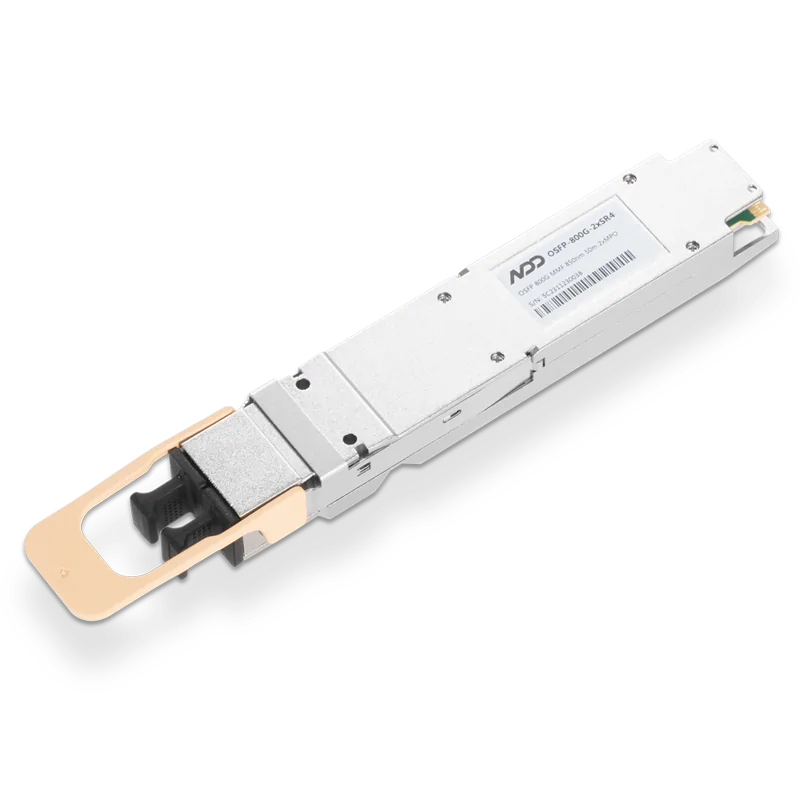 800GBASE-2xSR4 OSFP PAM4 850nm 50m MMF Module
800GBASE-2xSR4 OSFP PAM4 850nm 50m MMF Module- 1Optical Transceiver: Packaging Methods & Optical Chip Types
- 2Optical Transceiver: Channel Configuration, Modulation Schemes, and Future Development
- 3InfiniBand VS. RoCE v2:Which is Best Network Architecture for AI Computing Center?
- 4NVIDIA GB300 Deep Dive: Performance Breakthroughs vs GB200, Liquid Cooling Innovations, and Copper Interconnect Advancements.
- 5Blackwell Ultra - Powering the AI Reasoning Revolution




